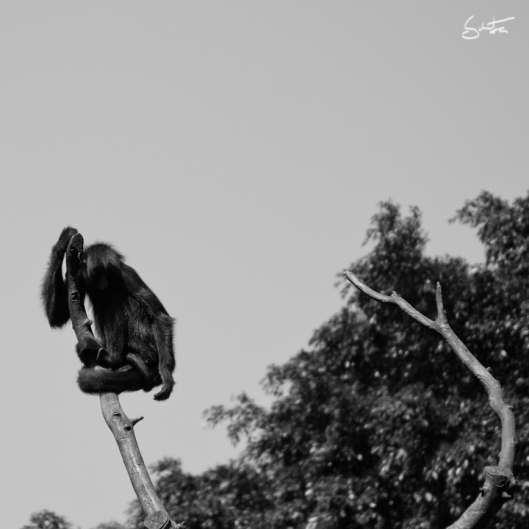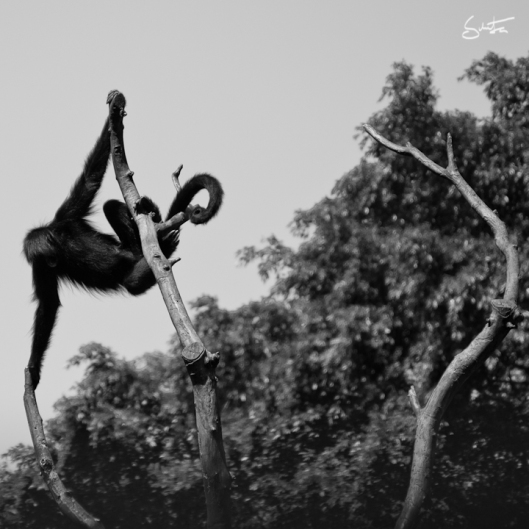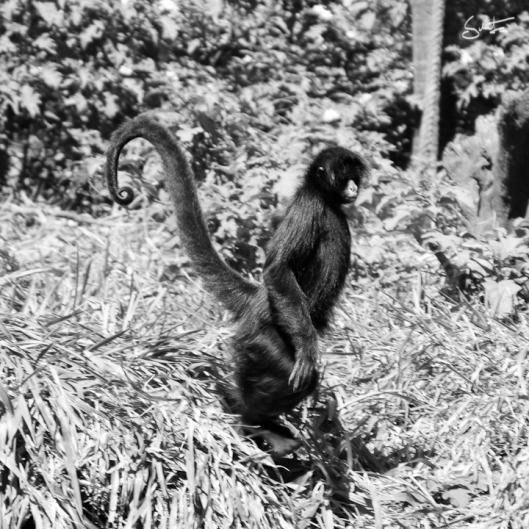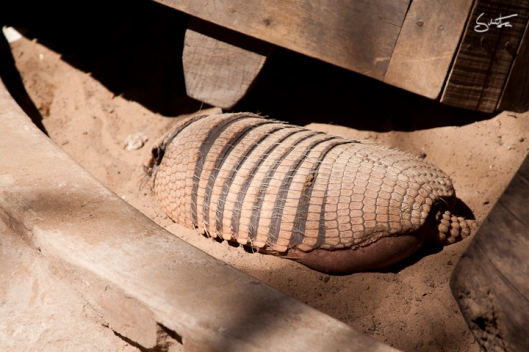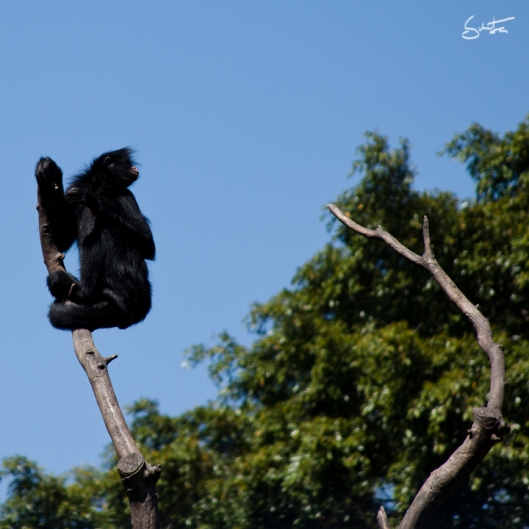Nasze wyprawy do zoo staly sie niemal niedzielna tradycja. Jednym z powodow jest to, iz w koncu odkrylismy, jak dojechac na drugi koniec miasta autobusem (nr. 55).
Tym razem nie zabawilismy tam zbyt dlugo, poniewaz upaly i tlumy ludzi dawaly nam sie we znaki. Zreszta nie tylko nam – zwierzeta rowniez byly osowiale i albo kryly sie w cieniu, albo wygrzewaly sie na sloncu.
Tylko jedno stworzenie rozpierala energia – a byl to czarny wyjec amazonski, jeden z najwiekszych naczelnych Ameryki Poludniowej. Wyjec wspial sie na drzewo, aby zjesc banana, balansujac przy tym swoim dlugim chwytnym ogonem, a po skonczonej uczcie zszedl na dol i pobiegl na 2 nogach w zarosla! Prawde mowiac mielismy szczescie trafic na takie aktywne stworzenie, bowiem ten rodzaj wyjcow spi lub odpoczywa przez wieksza czesc dnia. Poza tym, podobno budowa ich konczyn nie sprzyja poruszaniu sie po plaskim podlozu, a tu prosze – malpa zmalpowala czlowieka!
Wyjec amazonski, jak sama nazwa wskazuje wystepuje w amazonskich lasach Boliwii, Brazylii i Paragwaju. Jednak, tylko samiec jest czarny – futro samic ma kolor od brazowego do zoltego. Wycie wyjcow moze byc slyszane na odleglosc 5 km, ale w zoo dalo sie slyszec jedynie wycie zwiedzajacych, probujacych komunikowac sie z dalekimi ‘przodkami’:)
***
Our Sunday’s trips to the zoo have become almost traditional. One of the reasons is that in the end, we discover how to get to the other side of the city by bus (no.55).
This time we didn’t stay there too long, because of the heat and the crowd . It was too much not only for us – animals were also sleepy and either hid in the shade, or were sunbathing.
Only one creature was bursting with energy – it was the Amazon black howler, one of the largest primates in South America. Howler monkey climbed a tree to eat a banana, while balancing its long prehensile tail, and then it went down and ran on two legs in the bushes! To be honest, we were lucky to see it being so active, because this kind of howler monkeys sleeps or rests 70% of the day. As they say, because their limb structure makes terrestrial movement awkward, they spend most of their time in the trees and only come down for water during dry spells. Well – our monkey was ‘apeing’ around and mimicking humans!
The Amazon howler, as the name suggests, lives in the Amazonian forests of Bolivia, Brazil and Paraguay. However, only the male is black – females’ coat is brown to yellow. Howler monkeys howling may be heard at a distance of 5 km, but in the zoo we could hear only the monkeying visitors trying to communicate with their distant ‘ancestors’ :)

